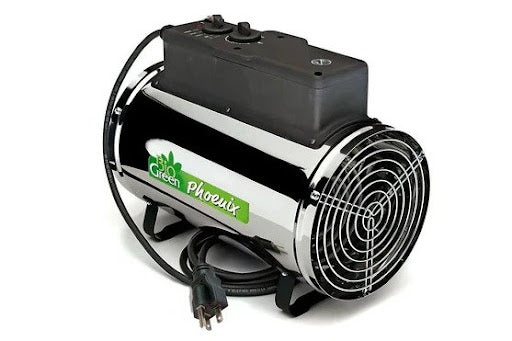It may be a challenging feat to control humidity, moisture, and mold in a DIY backyard greenhouse, but it is a necessity. Humidity, mold, and moisture control are crucial to ensuring that your plants grow healthy. Review and consider the following tips and you’ll be on your way to maintaining a healthy growing environment in your greenhouse.
1. Ventilate Adequately
Your DIY greenhouse kit needs to be well-ventilated to allow fresh air to circulate. This is a good way to prevent the build-up of moisture.
You can improve airflow by installing vents, exhaust fans, and louvers in your greenhouse structure. Your greenhouse size and shape will determine the maximum amount of these ventilation add-ons you’ll be able to work with.

2. Dehumidify
Monitor your greenhouse’s humidity levels with a hygrometer. Ideally, you want to aim for a range between 50% to 70%. This range is best for healthy plant growth.
If your humidity levels are off the charts and affecting the growth and health of your plants, you should get a dehumidifier. This device will help to control the humidity levels in a greenhouse by removing excess moisture from the air.
Humidifiers come in different sizes, so choose one that won’t take up too much space in your greenhouse, but big enough to handle the amount of moisture you need to remove.
3. Water Properly
If you water your greenhouse plants only when necessary by allowing the soil to dry out between waterings, you won’t have excess water buildup in the soil. Additionally, allow for proper drainage holes in your grow bags, beds, and pots. If you are able to, install a water system that allows you to control the amount of water delivered to each plant.
4. Control Temperature
The temperature inside your gardening greenhouse can have an impact on the humidity levels. Try to keep the temperature between 60°F to 80°F (15.6°C to 26.7°C) at daytime. Since nights are usually cooler, slightly lower your greenhouse’s temperature during the night. Install a cooling or heating system to maintain a consistent temperature.

5. Insulate properly
Insulate your DIY backyard greenhouse properly to help prevent the buildup of moisture within the structure. Not all insulation is the same, so do research to find out what is appropriate for your climate and greenhouse structure. You should ensure that all windows and doors are properly sealed.
6. Use Mulch
Mulch helps to reduce humidity levels by retaining moisture in your garden beds, thus preventing evaporation. Be careful not to overwater when you use mulch, as you’ll have to contend with mold and excess moisture in your soil.

7. Clean Regularly and Use Fungicides
Clean your greenhouse shelves and all surfaces to prevent the buildup of mold. Remove plant debris as these will foster the growth of mold and other harmful bacteria. Mold can be eliminated with fungicides. Always use protective gear when using these agents, and ensure you use fungicides that are appropriate for your plants and the type of mold you are dealing with.
With these tips in mind, you'll be on your way to creating a healthy and happy growing environment for your plants!
